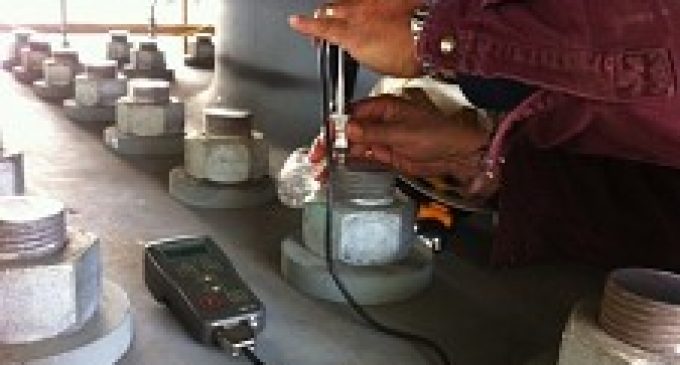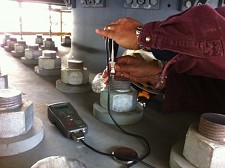Bay Bridge Bolts Hold Up Under Scrutiny

FEATURE
“Tests that Caltrans launched to predict the reliability of hundreds of at-risk steel fasteners on the new Bay Bridge eastern span after 32 rods failed this year are giving rise to cautious optimism that the parts will not need to be replaced, writes Jaxon Van Derbeken of the San Francisco Chronicle.
“These tests are going really well,” Caltrans’ engineer Brian Maroney said of tests intended to gauge the steel parts’ ability to hold up in a marine environment. “While it’s too early to draw conclusions, so far it’s good news.”
The tests, which began in August, were ordered after 32 rods installed on seismic-stabilizing bridge structures in 2008 snapped when workers tightened them in March, the Chronicle reports. Hydrogen embrittlement was determined to be the cause of the failure.
“Of the 2,200 rods and bolts at issue, more than 400 anchor the eastern span’s tower and cannot be reached for replacement. Caltrans hopes to keep many of those and more than 1,100 other steel fasteners dry and at a low tension, reducing their risk of being contaminated by hydrogen and cracking.”
That leaves 700-plus rods and bolts at risk of cracking because “they are extra-hard, under high tension and exposed to the moist, hydrogen-rich air.”
Some outside experts have questioned the validity of the tests to accurately predict how the rods and bolts will hold up on the bridge.
“We’re running a real-time experiment – that is not a good thing to do with something this important,” Bob Bea, an emeritus engineering professor at UC Berkeley, told the Chronicle. “The strategy of replacing all the critical elements is the correct strategy. It’s painful, but it’s much less painful than catastrophic failure in a major earthquake.”
Click here to read FIN’s interview with the bridge bolt supplier. ©2013 GlobalFastenerNews.com



There are no comments at the moment, do you want to add one?
Write a comment